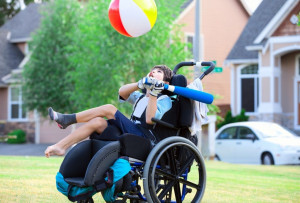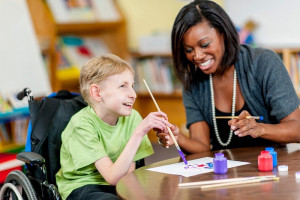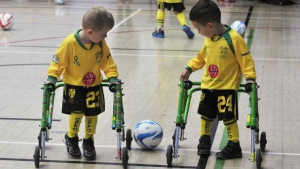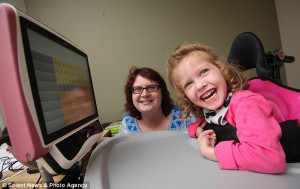
Enhancing Communication with CP
Enhancing Communication with CP
“Communication works for those, who work at it”
The need to communicate and reciprocate is not irrespective of any disabling conditions. Life itself comes both with the need and responsibility to “share”. While speaking of cerebral palsy, challenges are multiplied by the number of unique factors, that every child with CP is presented with. Often speech and hearing are impaired, while at other times, the facial muscles do not permit the desired movement needed to speak or express properly. Irrespective of all the facts, we want our children to be able to speak out and learn to converse. But often we forget that the basic language for every child is “play”.
And to be able to succeed as a parent or a caregiver of the child with special needs, cultivating a playful attitude can work wonders in the relationship too. Some transformational attitudes that can really be helpful are as follows:
1. Exposure to the world:
Despite all the odds that a child with CP comes across, stepping out in the real world and touching lives of the peers is a must. Howsoever stimulating the house can be, it still does limit the thought process of a growing mind. Besides nature itself is the most organic stimulant for expression. Fresh air, sunlight and a few lazy moments can trigger the innate tendencies to appreciate the environment around.
2. Choose Inclusive ideas:
Consider the child’s priorities as the key to choose the activities. Irrespective of the limitations, children express their desires to participate in such activities, which we, as the second person, don’t even consider at times. Children get motivated by seeing others participate in certain activities, and subconsciously visualize themselves as doing the same. It would be worth if a child expresses his/ her innocent desires freely to the caregiver.
3. Modify:
One the child’s interest has been tapped, it needs to be individualized accordingly. For example, if a child chose badminton as the sport, and we know that though capable of holding a racket, the child won’t be able to match up the precision required in the game. An interesting modification is to replace the shuttle with a balloon, which is comparatively bigger, slower and in fact a lot more fun to look at. It all needs is the “childlike” creativity to take over the role here.
3. Intensive Interaction:
A school, Intensive Interaction (II) is a well-researched subject for promoting communication, especially with the non-verbal individuals. In simple words, it is just following the actions and gestures of the individual and imitating the same. This therapy does require some training but it’s worth trying where nothing else seems to work.
4. Involve Humor: “The Body heals with Play, the Mind heals with Laughter, and the Spirit heals with Joy” –
As goes this famous saying, it is true to the core. And humor is the gateway to the heart, be it an individual. Once laughter is achieved, a limitless expression is bound to happen. Creating funny moments in daily life, and capturing fun are always great ideas to add life to a routine. Joyful and fun-filled memories are often important sources of conversing with children.
For more ideas check out our other blogs
- Tips to Teach Maths to Children - November 29, 2022
- Top 10 Tools to Teach Writing for Children - August 23, 2022
- Tips to teach phonics to your child - March 1, 2022




Leave a Comment
(0 Comments)